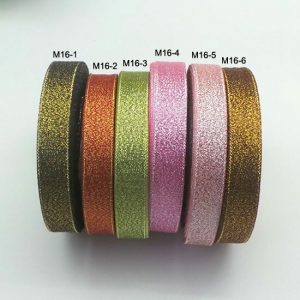After the emergence of the webbing factory glue and its wide application in the water slurry, the webbing factory has a very good coverage. The webbing factory enables dark clothes to be printed with any light color, and it has a certain gloss and three-dimensional effect. The ready-to-wear garments look more high-end, so it has quickly become popular, and it is used on almost every printed T. But because it has a certain hardness, it is not suitable for large-area solid patterns. It is better to print large-area patterns with water paste, and then embellish some glue, which can solve the problem of large-area glue hard and highlight the pattern. A sense of hierarchy; another method is to steal a large area of solid patterns.
Sew half of the cloth, open the tube-shaped seam allowance, and sew half the width of the elastic band on the edge of the cloth. Leave 2 cm in the center of the seam allowance for the elastic band to be put on the jacquard elastic band. After the elastic band is inserted, the elastic band will be stacked and stitched. The elastic band used by this girl is wider than the force, so she uses the box-style stitching method. If everyone uses a narrower force, you can sew straight back and forth directly after stacking. The kind of stitching method is that the elastic bands are not stacked, and the seams are stitched back and forth with a few stitches directly in a zigzag pattern. Finally, stitch up the elastic band.
Webbing
It is a bad effect, but it is always a bit hard to wear, so it is better to combine water and glue to solve the problem of large-area printing. There are glossy and matte surfaces, soft, thin, and environmentally friendly. It can be stretched. Generally speaking, glue printing is more commonly used. In practice, it is not only necessary to rely on the infrared pre-bake temperature to control the dyeing of the ribbon. The negative color difference, especially sensitive color numbers such as coffee and tea green, must use the joint application of anti-migration agents and other auxiliaries to achieve the winning dyeing results.
The influence of infrared pre-baking temperature on the webbing. After the pre-treatment and pad dyeing process, the polyester webbing is generally pre-baked with infrared rays before entering the hair color box to prevent the dye migration phenomenon during the drying process, and prevent dyeing defects such as stains and color difference between the front and back. When the infrared pre-baking temperature is lower than 80°C, the color difference between the front and back of the webbing is large, and it is difficult to reach the customer’s application request. When the infrared pre-baking temperature reaches above 100°C, the chromatic aberration phenomenon of the front and back sides of the webbing is greatly improved.
This is because when the pre-baking reaches above 100°C, the moisture of the webbing basically evaporates, which greatly increases the ability of dye migration. Considering the actual cost and energy consumption of dyeing together, it is more appropriate to control the infrared pre-bake temperature at 100℃-150℃. The cost is generally determined by the thickness and liquid rate of the blank belt type. The higher the liquid rate of the blank belt, the higher the infrared pre-baking temperature.








